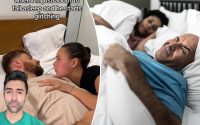Millions could suffer from little-known, energy-sapping sleep disorder: researchers
Neurological research shows that a rare condition in which people are exhausted during the day despite sleeping well is much more common the previously thought.
New findings from the American Academy of Neurology focus on idiopathic hypersomnia, which is tied to feeling excessively tired during daylight hours, along with difficulty waking up and feeling confused when doing so.
“We examined data from a large sleep study and found that this condition is much more common than previous estimates and as prevalent as some other common neurologic and psychiatric conditions such as epilepsy, bipolar disorder and schizophrenia,” said study author Dr. David T. Plante of the University of Wisconsin–Madison.
Both day and nighttime sleep data from 792 people, with an average age of 59, was examined, and 1.5% of that population (12 people) was observed to have the condition.

It was previously thought to impact only .005 to 0.3% of people, according to Sleep Disorders Australia.
Those with idiopathic hypersomnia tend to fall asleep in about half the time of people without the condition.
“Our results demonstrate that idiopathic hypersomnia is relatively common, more prevalent than generally assumed, so there is likely a sizable difference between the number of people with this disorder and those who seek treatment,” Plante added.
As for its severity as a condition, a 24-point survey measuring sleepiness examined how likely participants were to snooze while sitting, talking — or even in a stopped car.
Those with idiopathic hypersomnia — which is different than narcolepsy, as patients with the latter tend not to sleep in excess — averaged a score of 14, whereas anything above 10 is concerning to professionals.

“It has been difficult to determine the prevalence of idiopathic hypersomnia because expensive and time-consuming sleep testing is required to make a diagnosis,” Plante said, adding that additional research could lead to more causes of idiopathic hypersomnia and potential treatments for it.
New research also found that chronic fatigue syndrome is significantly more common than previously thought and is impacting an estimated 3.3 million Americans.


